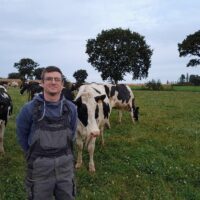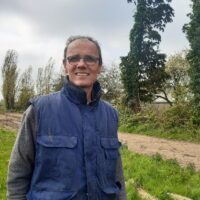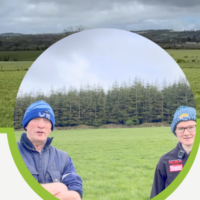Decrease in chemical N
Description
Practice asbtract
In Ireland, it is necessary to reduce the use of chemical fertiliser without compromising the herbage production, leading to economic and environmental benefits for the farm. Danny Cremin has reduced his reliance on chemical fertiliser by incorporating clover on his paddocks and maximising the use of slurry on the farm.
White clover is one of the most commonly used legumes for grazing. It is capable of fixing up to 100 kg N/ha of atmospheric nitrogen (N) into the soil and provides the sward with a source of N. To ensure a good establishment and persistence, Danny chooses the paddocks where soil fertility is optimum (pH > 6.3, P & K index 3 or 4). After a reseed or oversow of clover, Danny grazes paddocks at a lower cover to enable light to get through to the base of the sward.
Slurry is a very valuable source of organic N with on average 0.9kg/m3 of N, 0.5 kg/m3 of P (Phosphorus) and 3.2 kg/m3 of K (Potassium) per 1,000 gallons of cattle slurry. Danny has tested his own slurry to know its composition and takes regular soil samples of the farm. He spreads the slurry using LESS (Low Emission Slurry Spreading), which prevents the loss of nutrients in the environment and improves the nutrient uptake. The main reason LESS techniques are effective is that they minimize the exposure of slurry to the air. When slurry is spread on the surface, it is exposed to air for longer periods, and ammonia is more likely to evaporate. By either injecting the slurry into the soil or applying it in narrow bands using a dribble bar, these methods limit the volatilization of ammonia. Examples of a LESS system include trail and shoe, dribble bar, injection into the soil, shallow injection or band spreaders.
In 2023, Danny spread slurry to the value of 41 kg N/ha on his milking platform. Through soil sampling, Danny was able to recognise the areas of the farm that had low P & K soil indexes and targeted them with slurry to maximise the utilisation. Danny was able to reduce his chemical fertiliser use to 150 kg N/ha in 2023 from 193 kg N/ha in 2020 while still producing 13.4 tonne DM/ha in 2023. He experienced economic benefits as less fertiliser was bought. Danny saved approximately 125 €/ha on nitrogen fertiliser.
If farmers want to take on this innovation, Danny stresses on the importance of having good soil fertility for the clover. Moreover, talking with grassland advisors before introducing clover on farm is a necessity for Danny, as they will help for the variety selection and the management.
Context profil





Additional information
| Main domain of innovation | Improvement of nutrient cycle |
|---|---|
| Agroclimatic area | Atlantic north |
| Climate | Moderate rainfall |
| Soil Type | Loam |
| Management | Pasture dairy |
| Technical | Computer-based |
| Finance/investment | Low |
| Market | Local-rural |
| Social | Full-time farmer |




